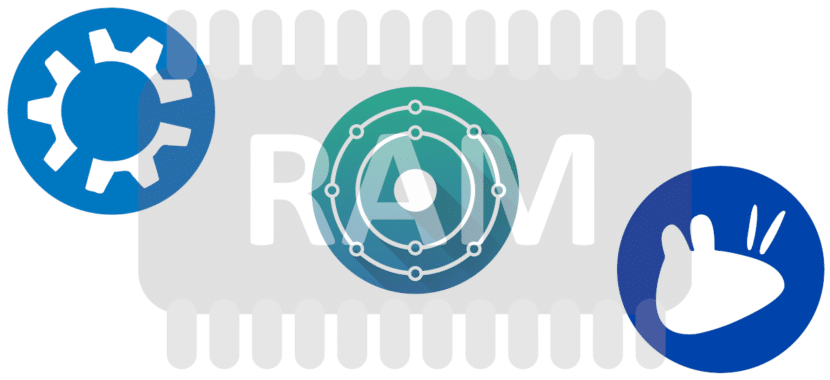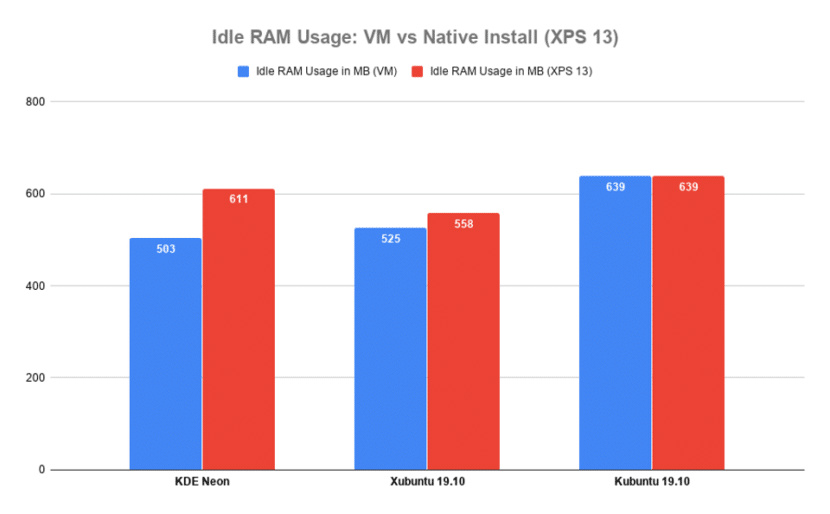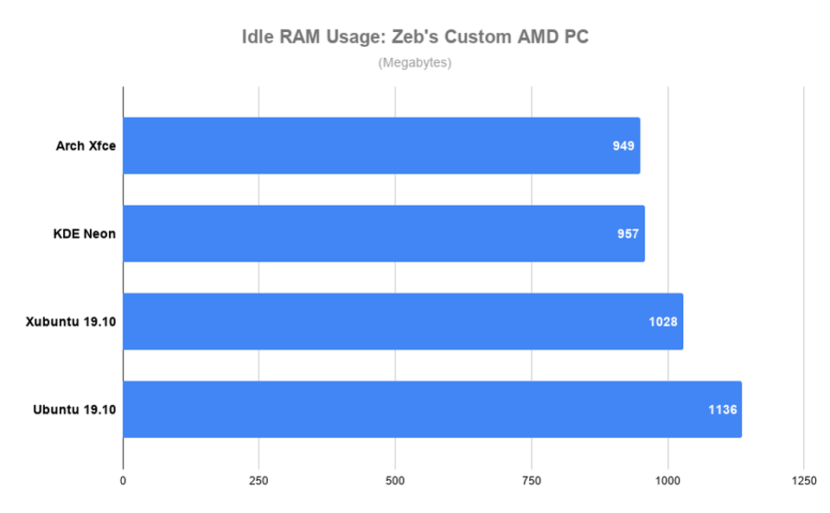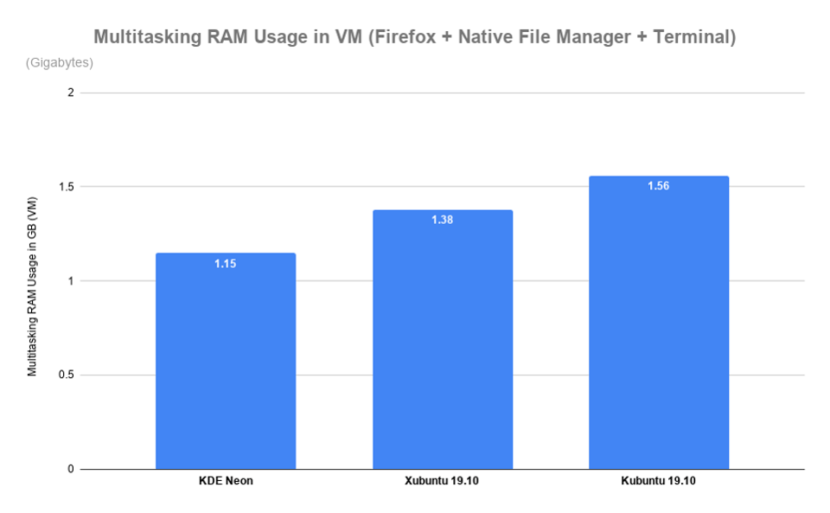
There is something good and bad in Linux-based operating systems. I am talking about the different graphical environments and distributions that exist, since only Canonical is responsible for 8 versions of its operating system. The good thing is that we have a choice and the bad thing is that, a nightmare when it comes to choosing separately, there is no clear line to develop; there are many variants with respect to everything. One of the best options is offered to us KDE and Forbes have demonstrated which is also and will be in terms of resource consumption.
What operating systems that use KDE software like Kubuntu or Kde neon have 'lost weight' in the latest versions is something I noticed myself when i went back to kubuntu at the beginning of this year. It was surprising to me that my previous laptop did not suffer in anything that I did, something that did happen to me using Ubuntu. The information that Forbes has released this week allows us to understand something that will be better in the future.
KDE Plasma 5.17 is as light as Xfce
What Jason Evangelho has done has been to compare the consumption of RAM memory in three operating systems: Kubuntu 19.10, KDE neon 5.17 and Xubuntu 19.10. Among these operating systems it must be explained that Kubuntu and KDE neon are "the same" operating system, but the philosophy of updates of the second makes it use plasma 5.17, whereas Kubuntu uses and will stay on Plasma 5.16 until using Plasma 5.18 on Kubuntu 20.04. Evangelho has done three different tests:
Idle RAM usage, VM vs. native install
Initially, you installed each of the operating systems on a virtual machine in GNOME Boxes, each with 4GB of RAM. After updating each VM, rebooting, and letting them sit for three minutes, it captured RAM usage using htop. Did the same test on a XPS 13 with Intel Core i7 and 16GB of RAM. The results were the following:
In a virtual machine, KDE neon uses the least RAM, but the winner is Xubuntu 19.10 in a native installation. What the above comparison also makes clear is that Plasma 5.17 improves RAM usage from 5.16 from Kubuntu 19.10.
On the other hand, someone whom Evangelho calls "colleague" (zebediah) did a similar test with similar results, in his case using his custom AMD PC. In this test Arch Linux was also used with Xfce and Ubuntu 19.10. Here are the results:
In this test, KDE neon is on the same level as Arch Linux with Xfce, better than Xubuntu 19.10 and much better than Ubuntu 19.10.
RAM usage in multitasking (virtual machine)
But who uses a computer to have it stopped? What really matters is what it consumes when we are working with it. In this second test, Firefox with two tabs playing content, the file manager and the terminal. The results are surprising:
KDE: not past, but present and future
We have mentioned more than once the awesome work done by KDE Community with your software in recent years. 3-5 years ago, the nice graphical environment also offered nice problems that resulted in monitor problems or instability that always made a server return to Ubuntu. But I always left a door open on my return because I imagined that everything would improve in the future. And so it has been.
Plasma 5.16 made some very important changes, but a huge step has been taken again in Plasma 5.17. One or more, because this performance, about which Forbes has given us clear information, makes us think that Plasma is going to become the best graphical environment that exists. Why are we going to lose functions by installing a graphical environment like Xfce if Plasma is equal (or more) light?
But the future is uncertain. We can think that with the launch of plasma 5.18 They will improve things even more, but we also have to bear in mind that Xfce has taken steps backwards in a field where KDE has taken them forward. In any case, the truth is that Plasma is one of the best options and it is becoming increasingly so also due to its low consumption of RAM.



This test says nothing. Debian Xfce 10 starts with less than 300MB and OpenSUSE KDE 15 with about 400. RAM consumptions can always be lower depending on the distro.
The correct question is how each desktop performs with its native applications. Now, you just have to open Kmail and activate the mail notifier in the tray to see how the RAM fills up.
On the other hand and very important, the use of CPU cycles is tremendous in KDE while Xfce performs more easily. Then there would be the matter of the performance of the composer and the games ...
As you can see, it is not as magical as it is painted. KDE is more complete at the cost of resources.
Plasma 5 is the damn desktop, second to none
QT is vastly superior to GTK in terms of resources. Certainly QT consumes a little bit (it is not that it takes any CPU to the limit, no matter how much Atom it is) more CPU is much more fluid.
It's like macOS where higher CPU and RAM costs justify a more rewarding user experience.
In any case, KDE is a complete environment, designed for a decent writer and not for a team that can hardly handle itself.
In use of RAM the consumption is very similar, the truth is that XFCE in old computers with little CPU feels more fluid, in modern computers the difference is imperceptible so it is convenient to use KDE, although the choice is a matter of taste that can go beyond the performance issue.
Well the truth, the meters will say what they want. Tested on my PC for over twelve years (no wonder, dual-core AMD, 8 gigs of RAM, AMD graphics integrated in CPU, the only vitamin the SSD). Not in virtual boxes, which would crawl: four terminal windows each one compressing mpeg to mp4 with ffmpeg, copying the old dvds that I am recompressing to my father from the recorder to the same hard disk, this Chromium open watching YouTube videos or watching webs several or leaving this comment, all at once. Spotify in the background.
The environment that is less costly / and I am not talking about "ooohh, it makes a little lag when I give it to 'see all the applications', how does that annoy me, what crap", I am talking about TRUE performance, understand productivity, that everything continues running and the explorer windows are opening fast, the webs load, the files are copied at their speed… it's GNOME. And I'm sick of trying it on everyone, I've already been through every Plasma, every XFCE, every "flavor" from Ubuntu to Manjaro. And I always end up coming back to Gnome because he's the only one who really behaves properly.
The meters can now say what they want, data as "relevant" as "ooh, gnome loads you 1,5 gigs in newly opened memory."
You have to practice more and measure less.